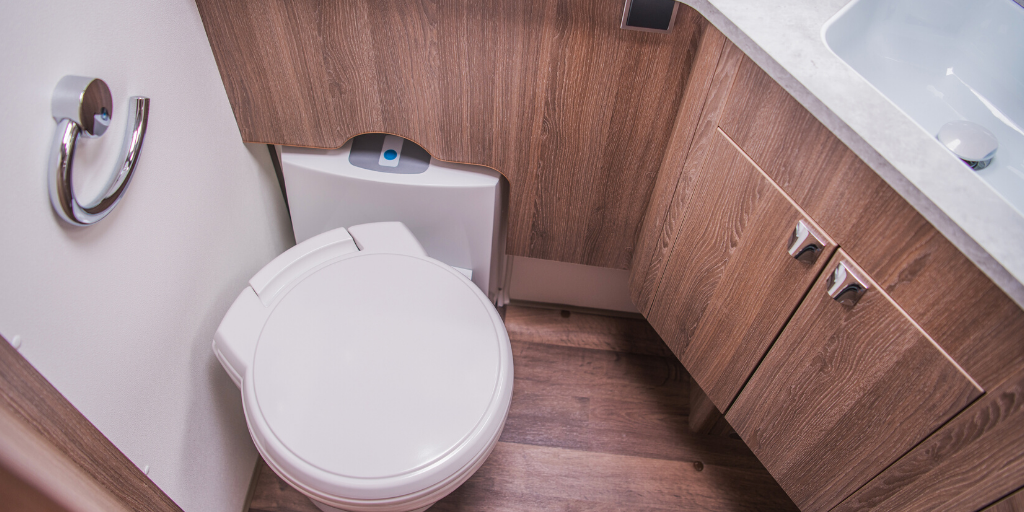One of the best conveniences of owning an RV is that many models come equipped with your own private bathroom. There’s no need to share with other campers or visit the communal restroom. You have privacy and functionality within your RV.
But, as with any house bathroom, problems can arise. Whether it’s a leak, a clog, or some other malfunction, you may find yourself needing to troubleshoot and fixing the toilet. RV toilets are not the same as your standard home toilet, so make sure you do your research, consult any manuals, and maybe ask an experienced RVer for advice.
Problem #1: The toilet is leaking.
First, you need to determine where the leak is coming from. Check to see if the water is dropping from the upper part of the toilet during the flush cycle, whether the bowl is full, and if there’s water just around the base of the toilet. Each of these symptoms means something different and requires a different response.
- A leak from the upper part of the toilet usually means the float seal in the vacuum breaker. Depending on the type of toilet, you can either buy a kit and replace the float seal or take everything apart to be cleaned. It may only be a dry and cracked toilet seal. If this is the cause, try moisturizing the seal with Vaseline before deciding if the seal needs to be replaced. This is something to do anyway as a preventative measure.
- If the RV toilet is leaking when the bowl is full of water, then check for cracks. This is more common with plastic toilets than porcelain toilets and usually occurs after winterization.
- Sometimes the leak may be coming from the floor at the base of the toilet, with a leak most noticeable after a flush. You may need to consider replacing the flange, which is wax or paper and rests between the toilet and the floor.
- A leak could be coming from the water connection behind the toilet as well. Check any connections to ensure they are tight.
Problem #2: The toilet is clogged.
This always seems to happen at an inconvenient time, so be prepared. One, make sure you have a flexible toilet tank wand with a high-pressure spray that can reach deep into the pipe and break up any clogs with a powerful blast. Some RVers have found that opening the toilet valve and pouring some pots of boiling water helps; let the water sit overnight. Alternatively, some RVers swear by the ice cube method in which There are some de-clogging chemicals Many clogs occur because the incorrect toilet paper is used. It’s important to purchase only toilet paper intended for use in RVs. Your standard grocery store bulk pack can end up causing problems, such as a clogged toilet. If you have kids, make sure someone didn’t drop something into the toilet that shouldn’t have been dropped in.
Problem #3: The toilet is running.
That sound isn’t music to anyone’s ears. A running toilet can spell T-R-O-U-B-L-E in a hurry if left unchecked. The bowl could overflow, causing water to overflow onto the floor of the camper and causing water damage. The main cause of a running toilet is the water valve, which is easy to replace if you determine first that it isn’t just simply stuck. You can check to see if the valve is stuck by doing a couple of forceful flushes, letting the pedal or lever to snap to close. If this doesn’t work, then you’ll have to check the springs on the pedal or that the lever mechanism isn’t getting stuck.
What if you need to purchase a brand-new toilet?
Let’s say a total replacement is necessary. How do you make a decision? Trailers and campers are more straightforward, while Class A motorhomes can be a little more complicated. What you need to know to make a decision: Does your current RV toilet use air to flush? Power to flush? Is it plastic or porcelain? How large is the waste hole? Camping style or residential style? A new toilet can come with a hefty price tag, but they are relatively easy to install so there shouldn’t be labor costs involved. RV dealers and service providers will be able to offer suggestions.

